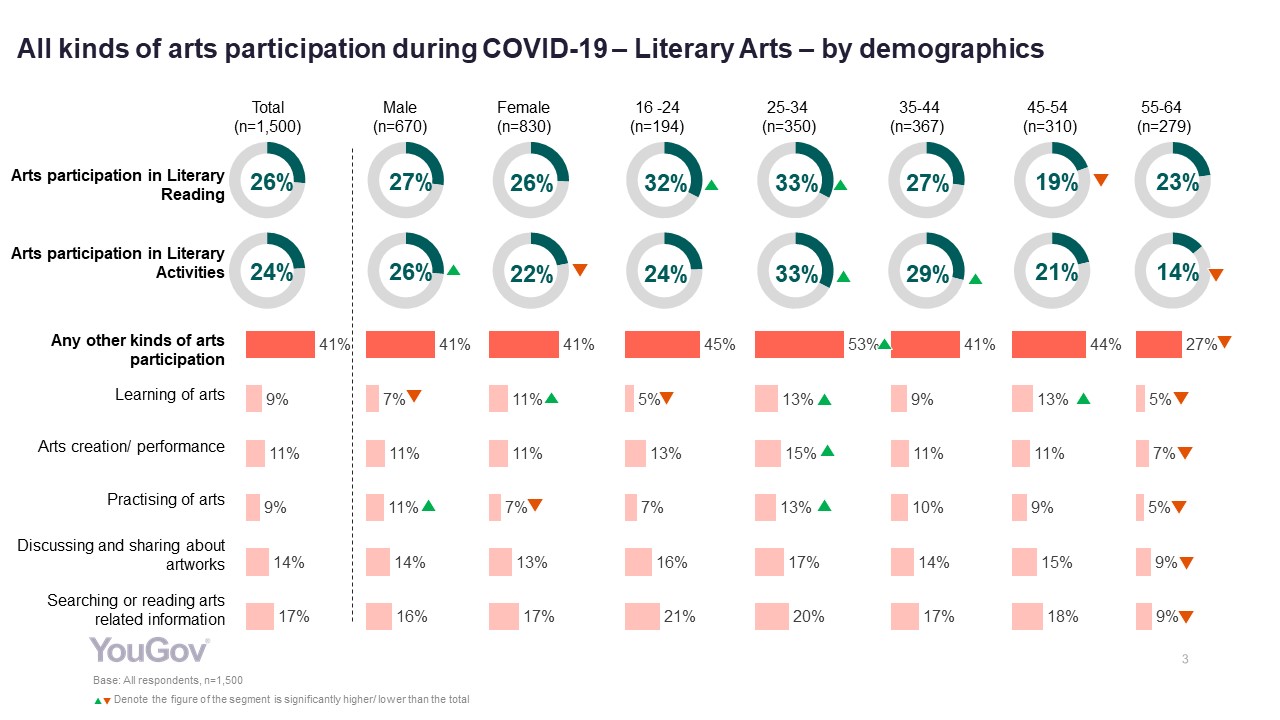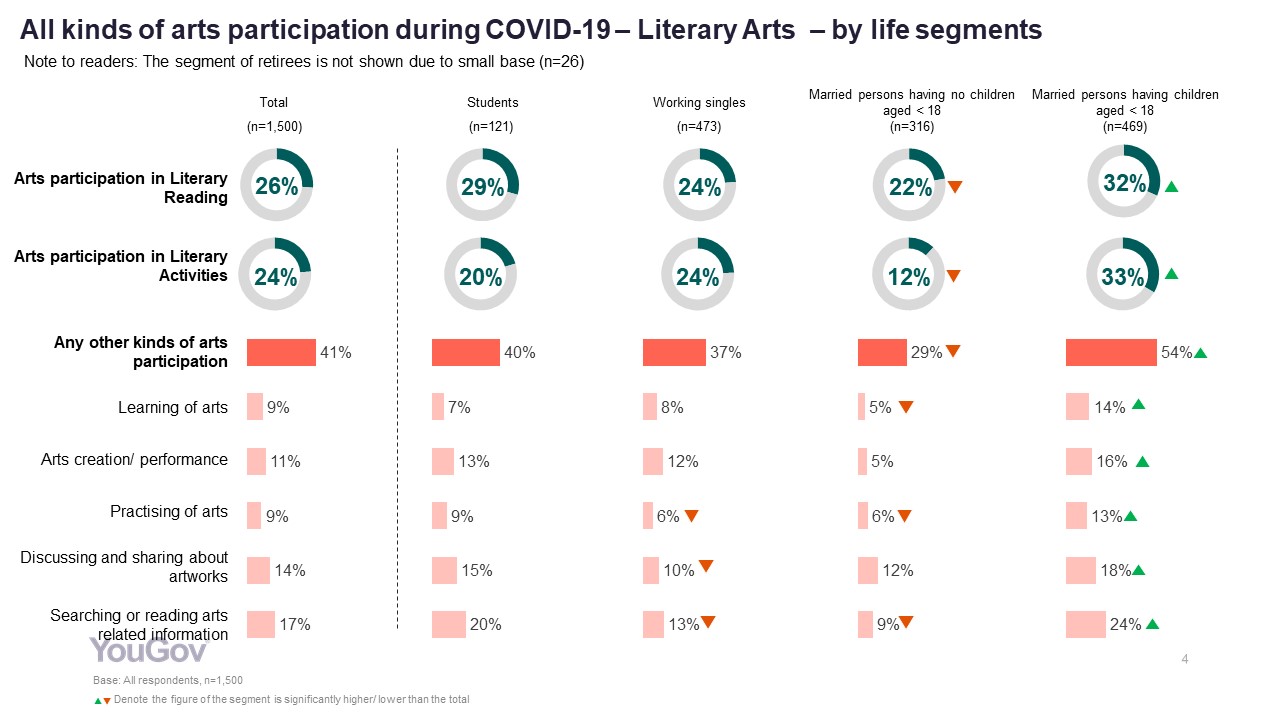Alternative Modes of Arts Participation Survey Highlights – Literary Arts
Hong Kong Arts Development Council commissioned a research consultancy to study the public perceptions of and behaviours on alternative modes of arts participation during COVID-19, in particular being the audience via alternative channels such as social media, paid video-on-demand platforms, and TV / radio broadcast. An online survey was conducted in January 2021 on a random sample of 1,500 Hong Kong citizens aged 16-64. Full report of the survey has been published here. The following is the summary of findings on the Literary Arts section.
| 1 | Changes in Overall Participation Incidence | |
| 1.1 | For Literary Arts, the scope of the study only covered the respondents’ participation in various Literary Activities and in Literary Reading. Literary Activities included reading clubs, book launches, book fairs, and literary talks/workshops, etc. Literary Reading included borrowing/reading printed copies of literature at any places, or borrowing/reading e-books or online literary publications through any channels. | |
| 1.2 | Participation in Literary Arts (i.e. combining Literary Activities and Literary Reading) dropped from 46% in 2018-2019 to 36% during COVID-19. | |
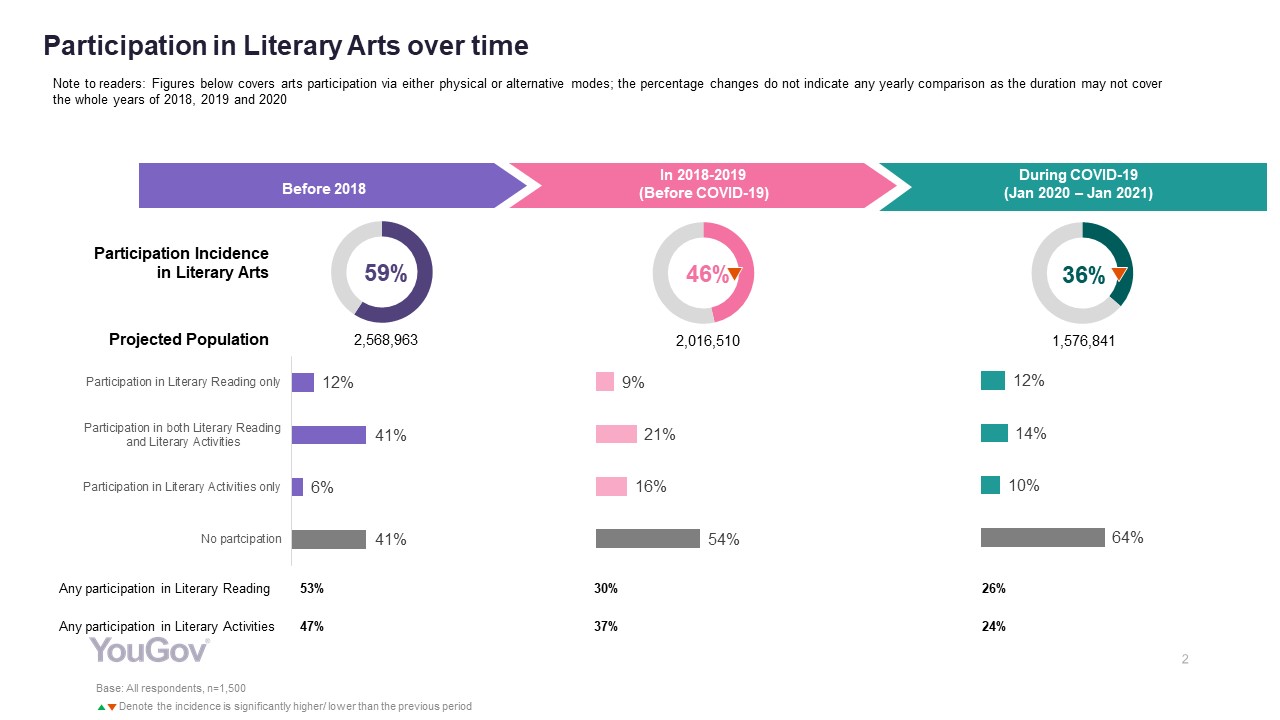 |
||
| 1.3 | Whether in terms of Literary Activities, Literary Reading or other kinds of participation in Literary Arts, young adults aged 25-34 and married persons having children under the age of 18 were the most active participants during COVID-19. | |
| 1.4 | During various time periods, there were some participants who only participated in either Literary Activities or Literary Reading but not both. Notably, in all time periods (before 2018, in 2018-2019 or during COVID-19), those who participated only in Literary Reading but not in Literary Activities were slightly skewed towards women and people aged 16-24. | |
| 2 | Changes in Participation Incidence in Literary Activities | |
| 2.1 | Participation in Literary Activities dropped from 37% in 2018-2019 to 24% during COVID-19. (See the left of the chart below) | |
| 2.2 | Of the 1,500 respondents, 57% had at some point participated in Literary Activities as readers. 16% of the respondents were Retaining Participants, who were not influenced by COVID-19 and had participated in all time periods. (See the right of the chart below) | |
| 2.3 | Despite 18% of the respondents having lapsed since the COVID-19 outbreak, 3% resumed participation in Literary Activities during the epidemic. (See the right of the chart below) | |
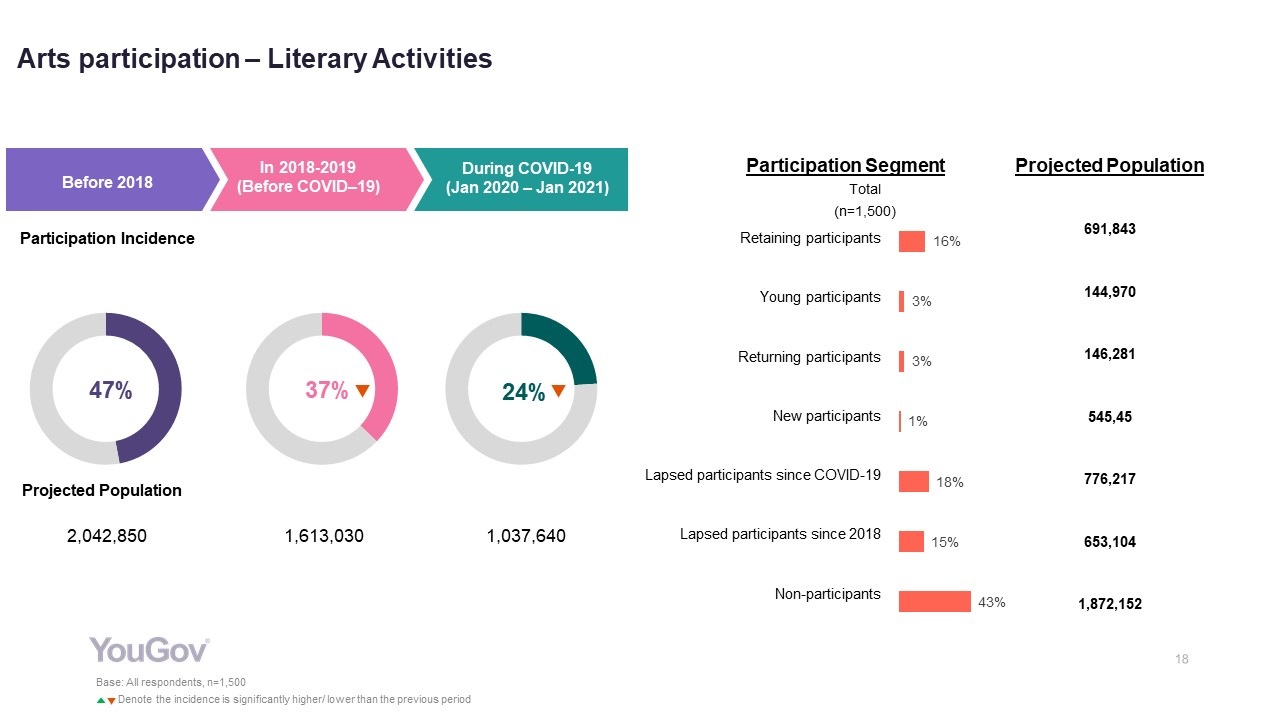 |
||
| 2.4 | Before COVID-19, nearly half of female participants had participated in Literary Activities only via physical modes (see the chart below). This might explain why the drop in Literary Activities participation during COVID-19 was more significant for female (from 37% to 22%) than for male (from 37% to 26%). | |
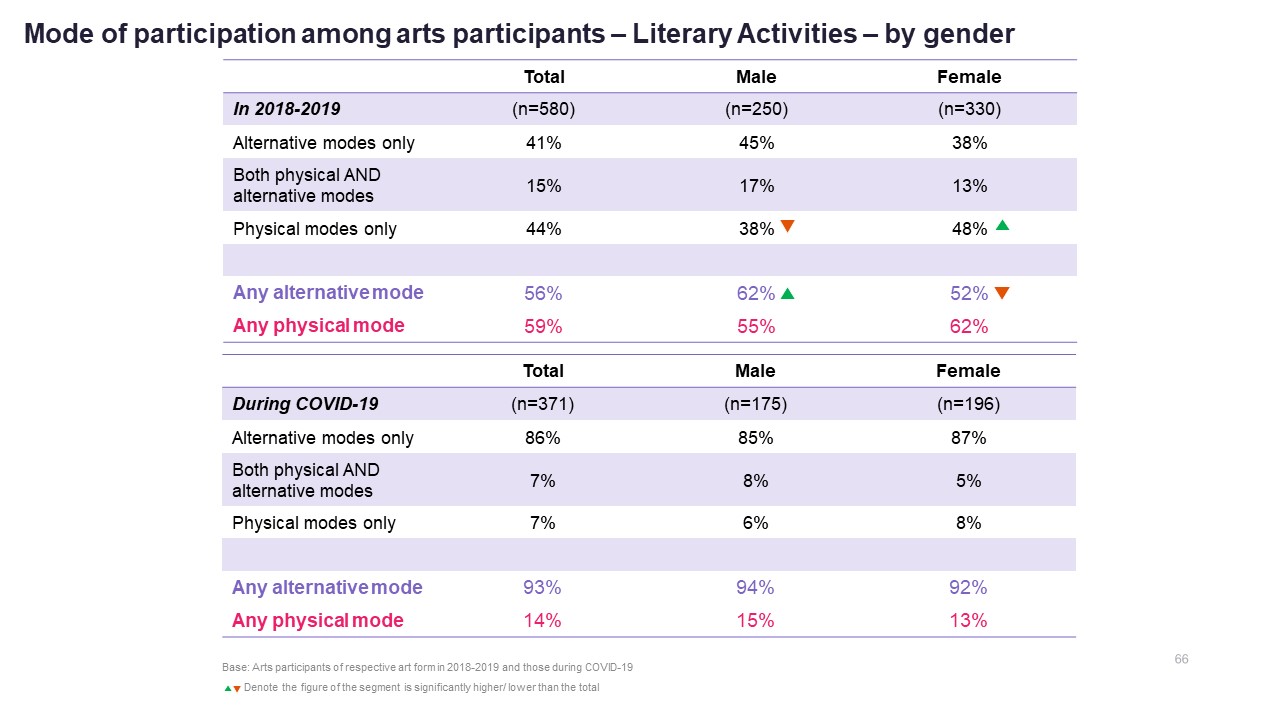 |
||
| 3 | Physical-mode and Alternative-mode Literary Activities Participation and Future Potential | |
| 3.1 | The percentage of audience participation in Literary Activities via alternative modes grew from 56% in 2018-2019 to 93% during COVID-19. The main channels were social media platforms, video conferencing app and designated official websites. (See the right of the chart below) | |
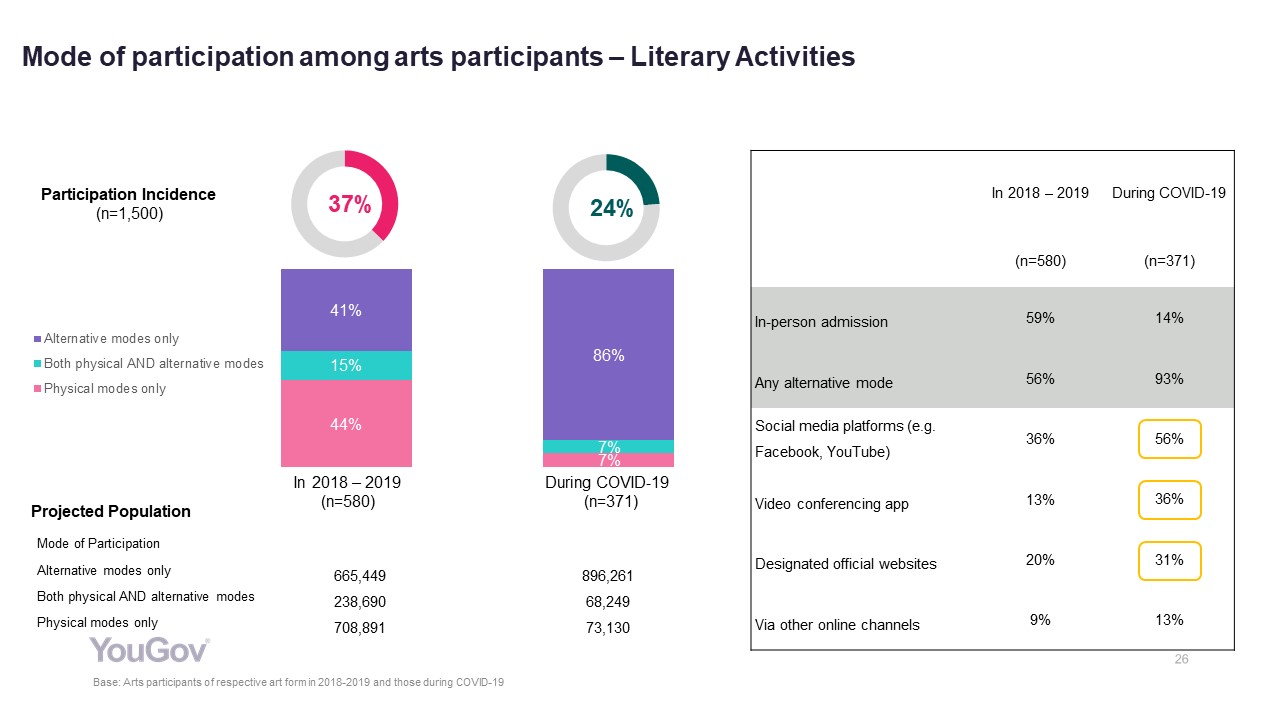 |
||
| 3.2 | Compared to the situation before the epidemic, alternative-mode participation in Literary Activities during COVID-19 was relatively more frequent. (From the left of the chart below, in 2018-2019, 41% of physical-mode participants participated 2 times or more on average per year; whereas during COVID-19, 53% of alternative-mode participants participated 2 times or more.) | |
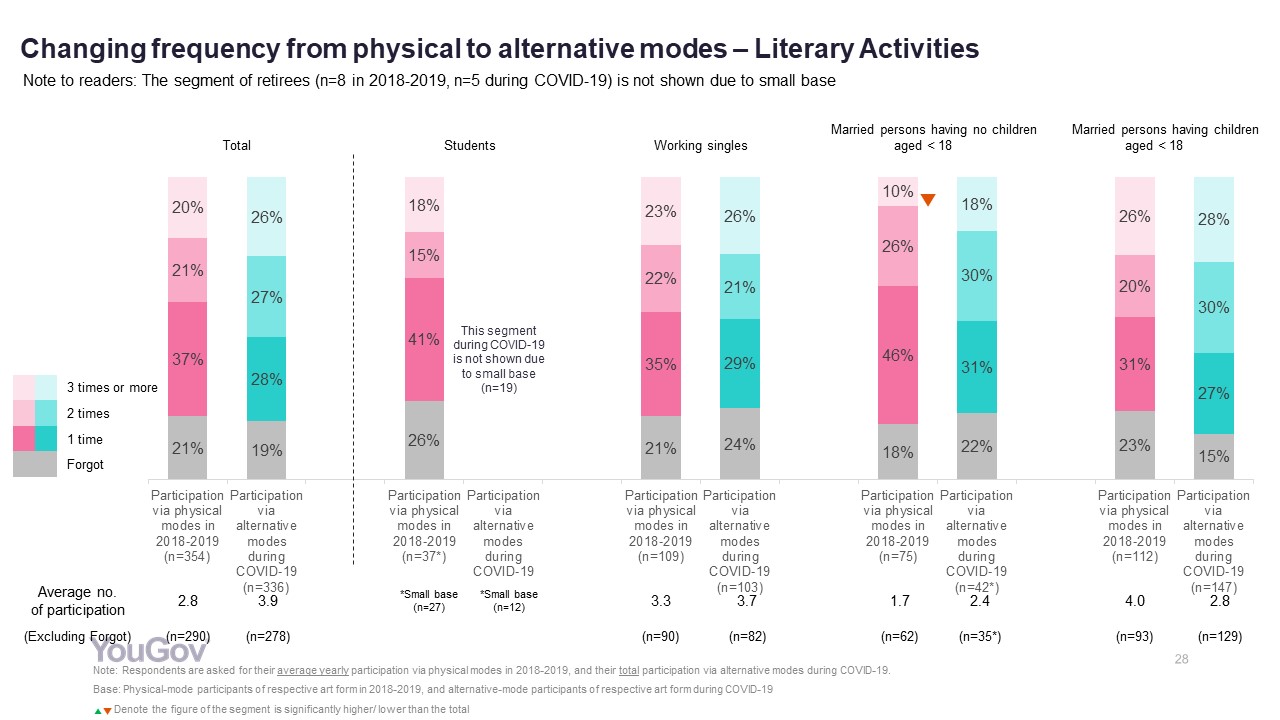 |
||
| 3.3 | During COVID-19, 27% of participants were willing to pay for alternative-mode Literary Activities. (See the left of the chart below) | |
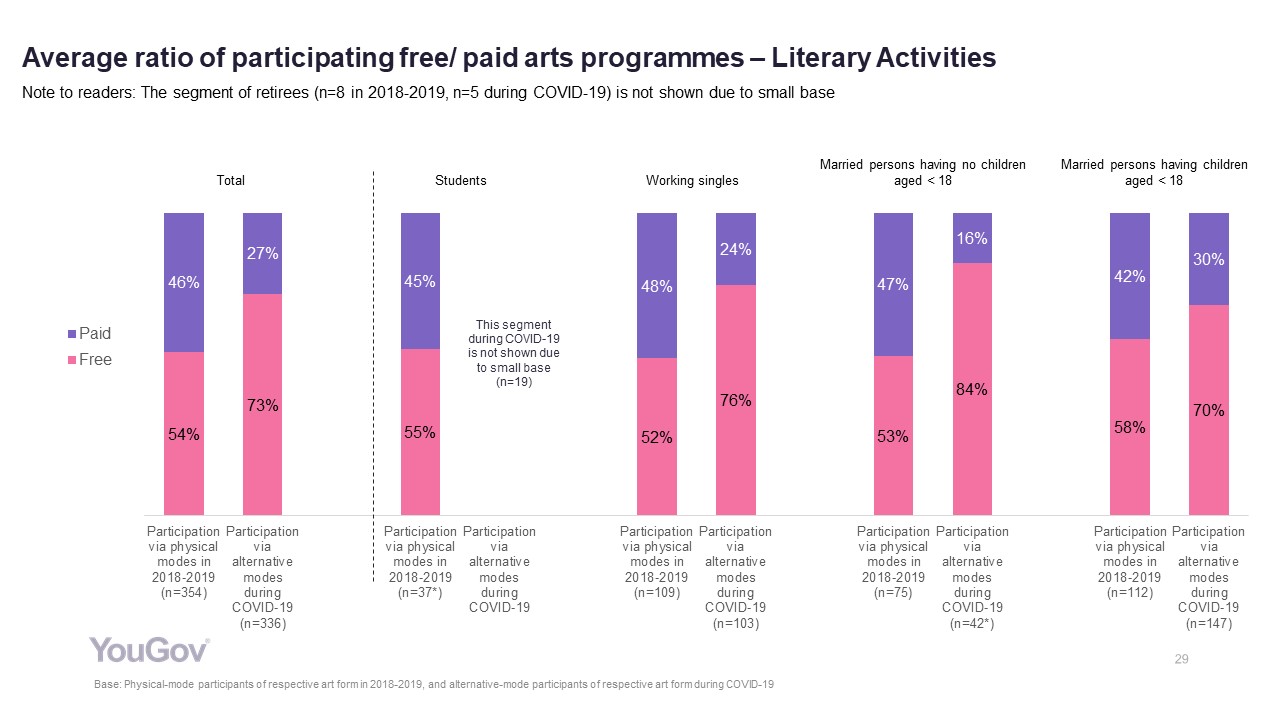 |
||
| 3.4 | During COVID-19, alternative-mode participants mainly participated in Literary Activities that involved local authors. However, compared to the situation before the epidemic, a higher percentage of participants had participated in Literary Activities that involved non-local authors (increase from 25% to 34%, see the left of the chart below). | |
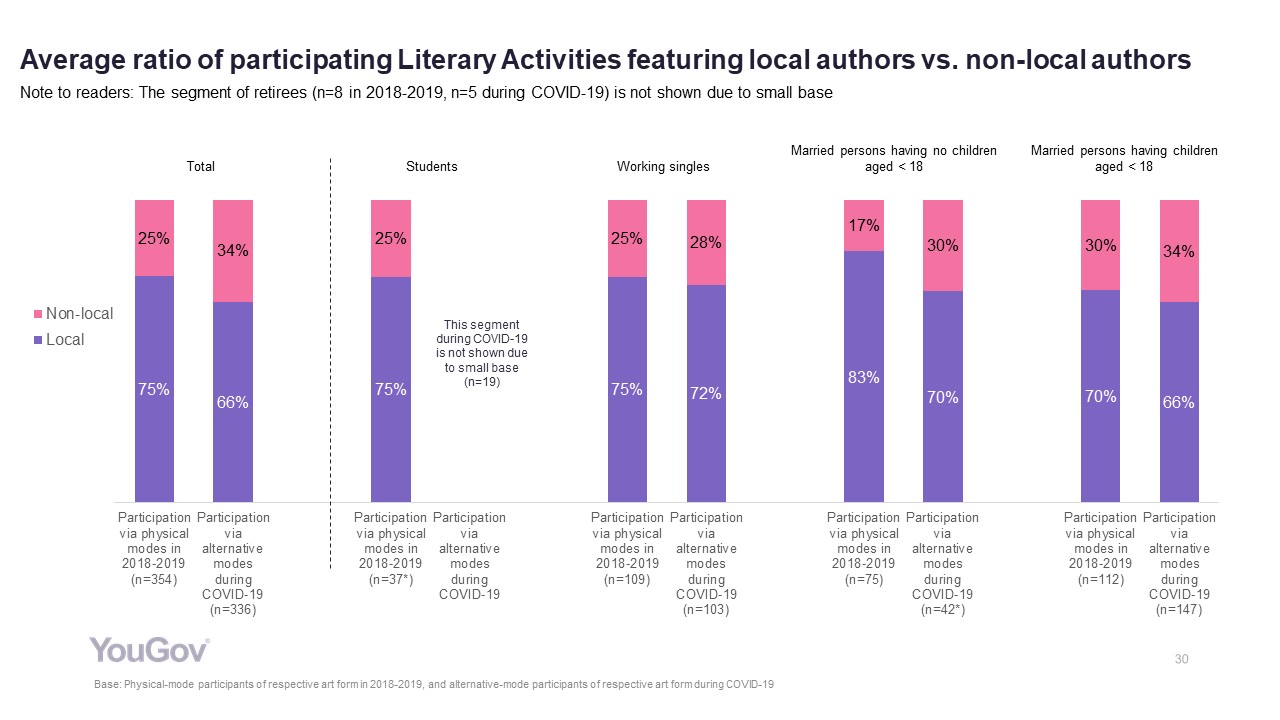 |
||
| 3.5 | 53% of all respondents expressed interest in participating in Literary Activities at post-COVID-19 period, more than the actual participation incidence (42%) in Jan 2018 - Jan 2021. | |
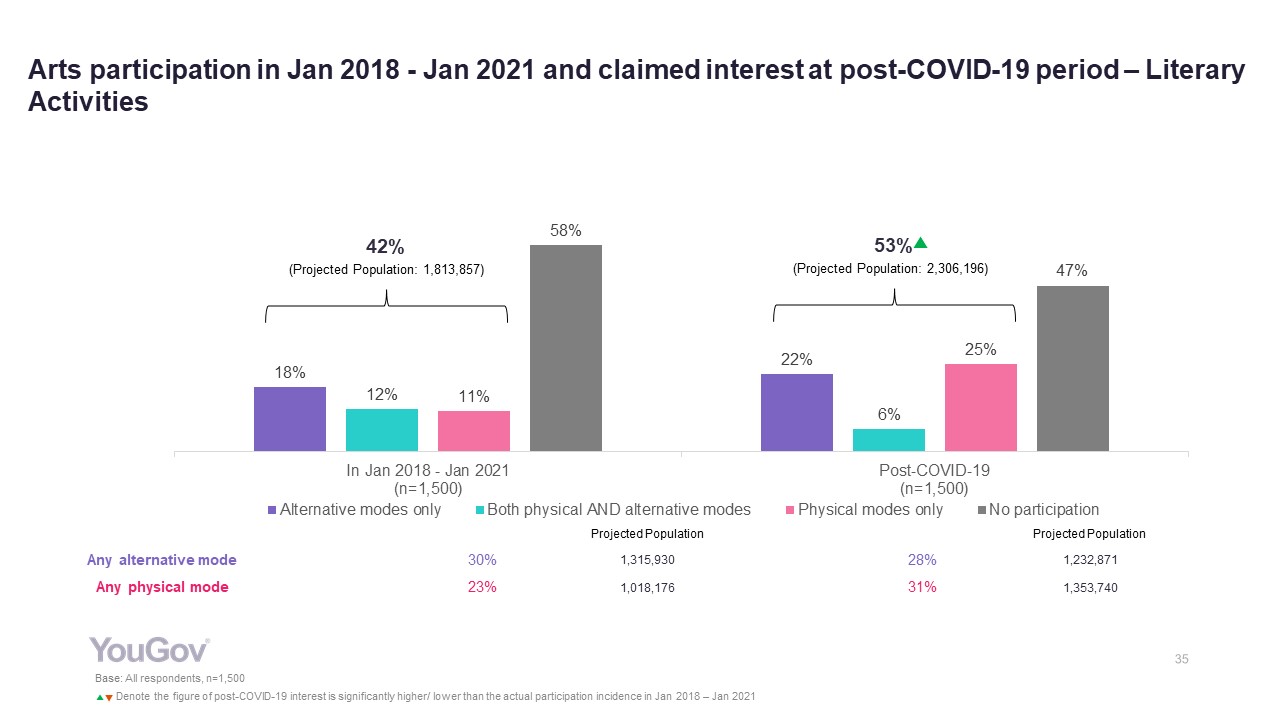 |
||
| 3.6 | Respondents at different life stages expressed different levels of interest towards participating in physical- or alternative-mode Literary Activities at post-COVID-19 period. For example, students were notably more interested in alternative-mode participation while married persons having children under 18 were more interested in physical-mode participation. Working singles shown similar levels of interest towards either physical- or alternative-mode participation. (See the chart below) | |
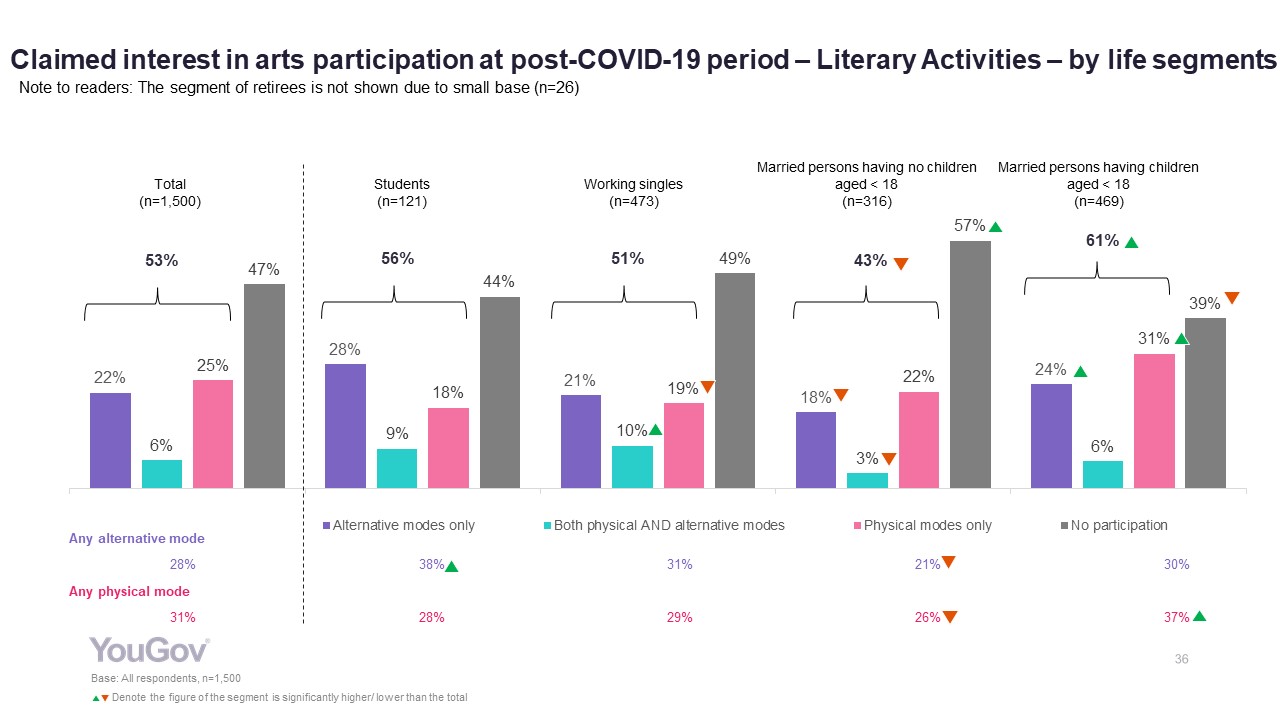 |
||
| 4 | Potential Participants of Literary Activities | |
| 4.1 | 55% of the respondents expressed interest in participating in Literary Activities at post-COVID-19 period. From the chart below, it could be seen that the sample of potential participants (the right column) and that of participants from Jan 2018 to Jan 2021 (the middle column) were both skewed towards young adults aged 25-34 and married persons having children under the age of 18. They generally had higher educational attainment and household income. | |
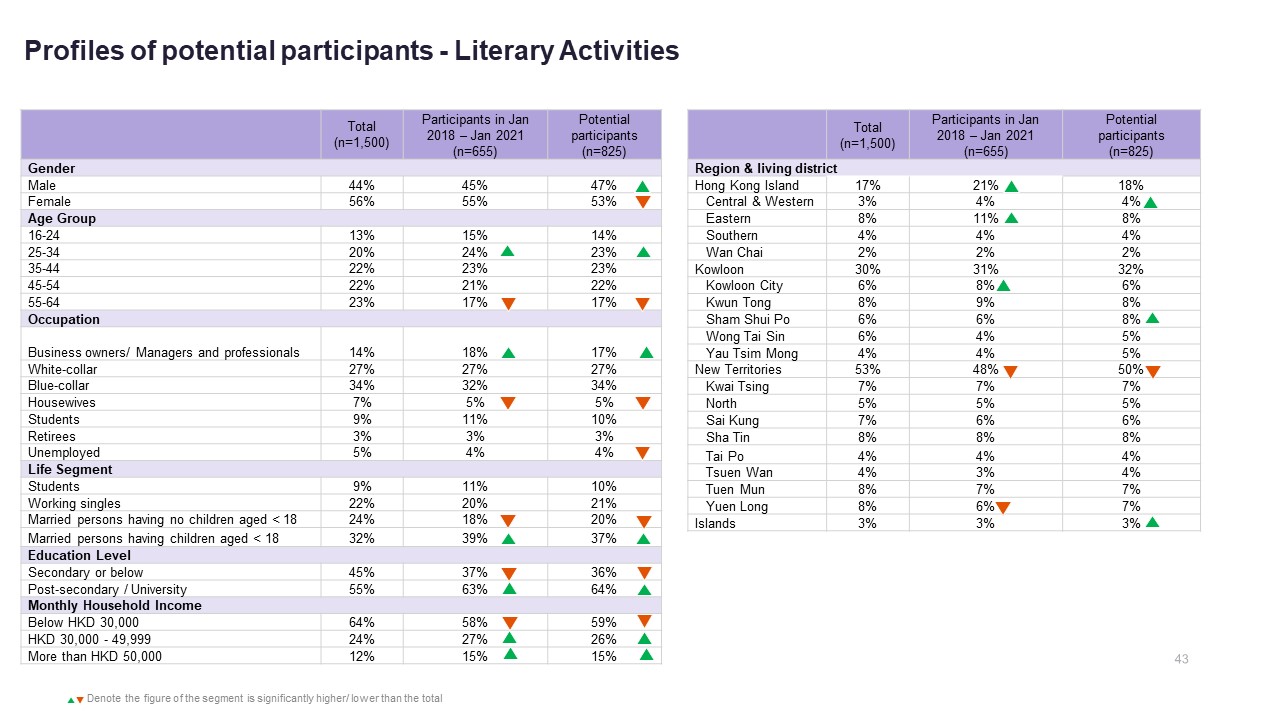 |
||
| 4.2 | Men were relatively more interested in alternative-mode Literary Activities at post-COVID-19 period. (See the chart below) | |
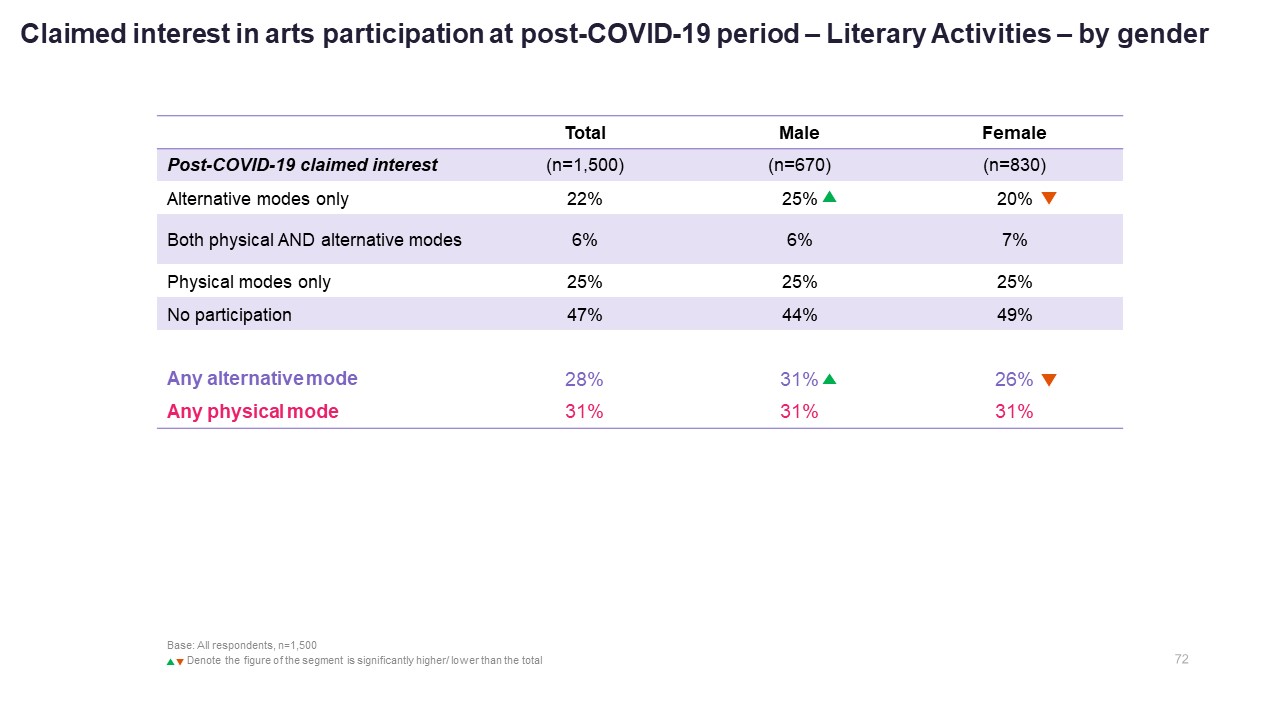 |
||
| 4.3 | Potential participants of alternative-mode Literary Activities expected to pay at around 60% of the physical ticket price. (See the left of the chart below) | |
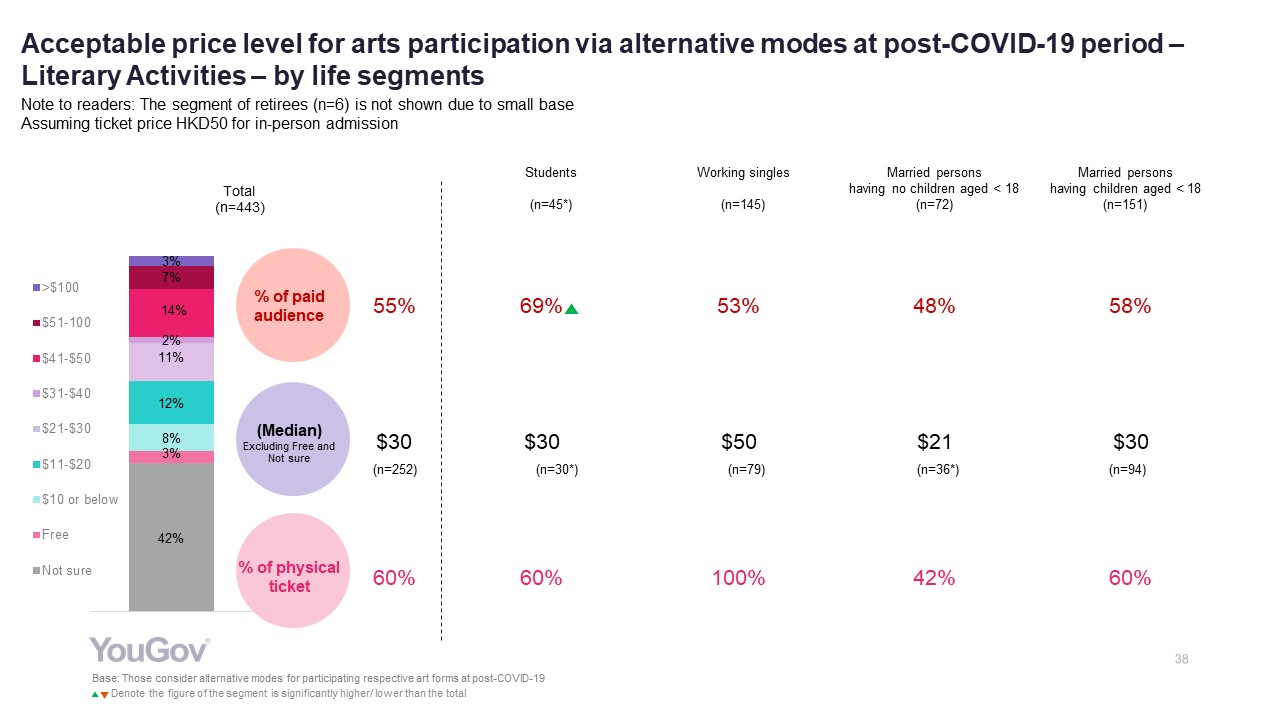 |
||
| 4.4 | More than 60% of potential participants at post-COVID-19 period did not participate in Literary Activities at the moment (i.e. they were Lapsed Participants or Non-participants) primarily because they had not received information on the arts programmes (see the chart below). Therefore, to attract these potential participants, more effective communication channels, such as social media platforms, emails, and ads on mobile apps or websites, should be used to disseminate programme information. | |
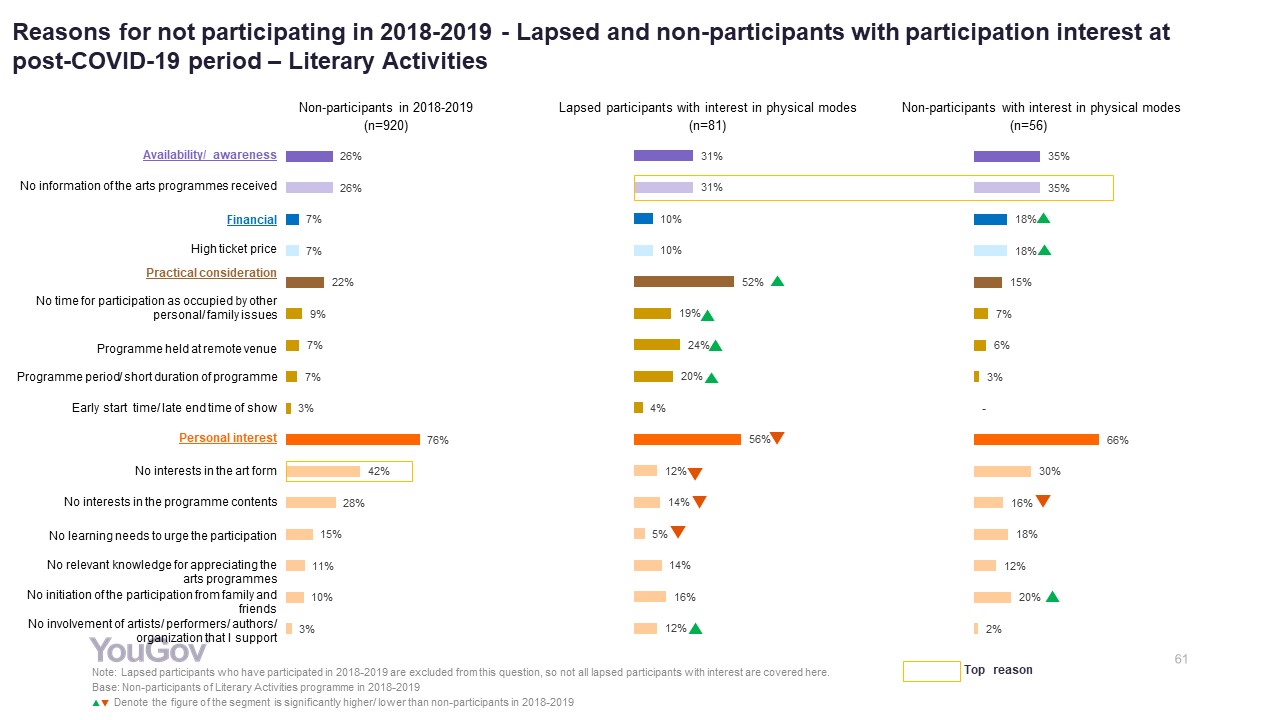 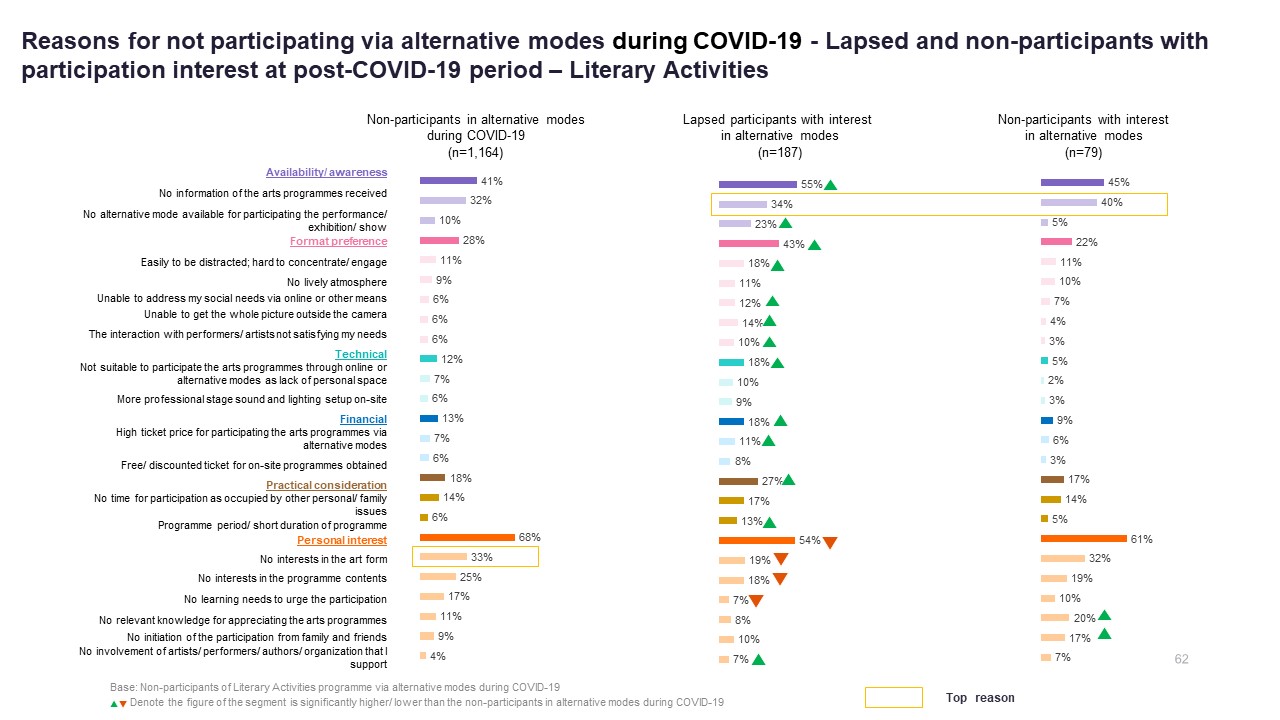 |
||
| 5 | Changes in Participation Incidence and Patterns in Literary Reading | |
| 5.1 | Compared to Literary Activities, the participation incidence in Literary Reading was relatively less impacted by COVID-19, down from 30% in 2018-2019 to 26% during the epidemic. (See the left of the chart below) | |
| 5.2 | Of the 1,500 respondents, 60% had at some point participated in Literary Reading. 17% of the respondents were Retaining Participants, who were not influenced by COVID-19 and had been literary readers in all time periods. (See the right of the chart below) | |
| 5.3 | Despite 11% of the respondents having lapsed since the COVID-19 outbreak, 5% resumed participation in Literary Reading during the epidemic. (See the right of the chart below) | |
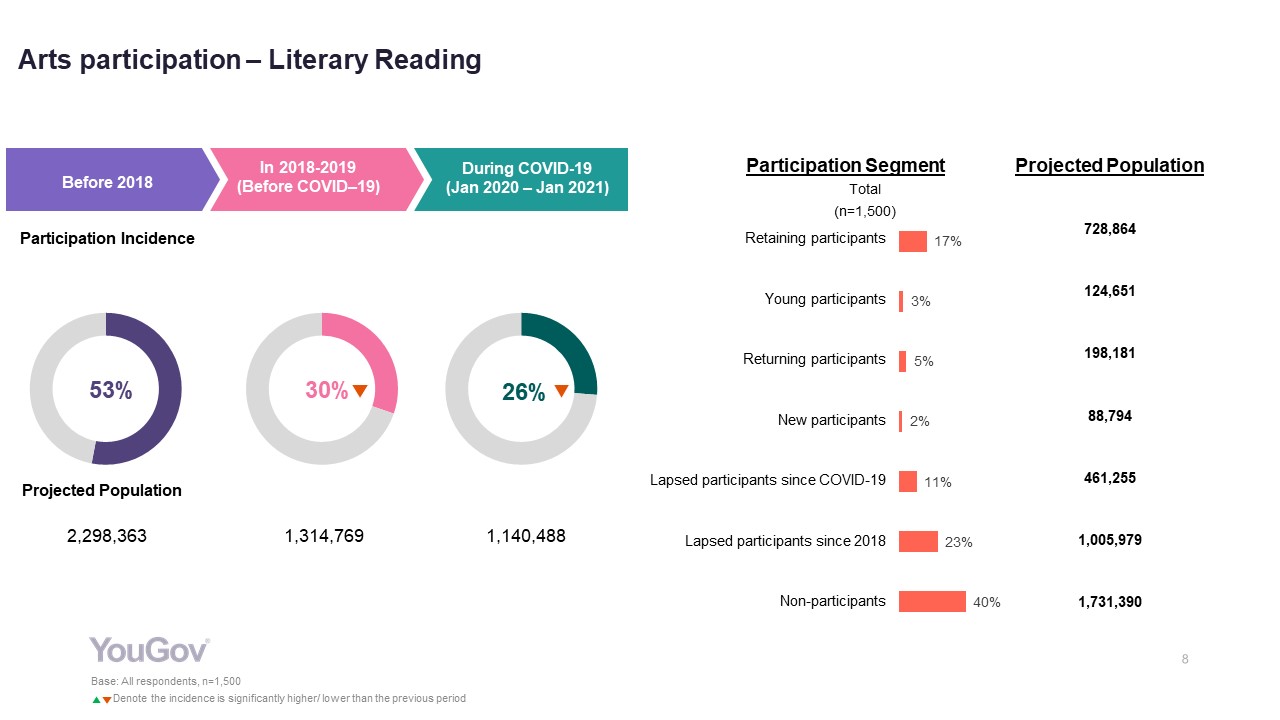 |
||
| 5.4 | During COVID-19, there were fewer Literary Reading participants who borrowed printed literature from library in-person, or who purchased printed literature from brick-and-mortar bookstores or online channels. Instead, there was more reading of e-books (especially free ones). (See the right of the chart below) | |
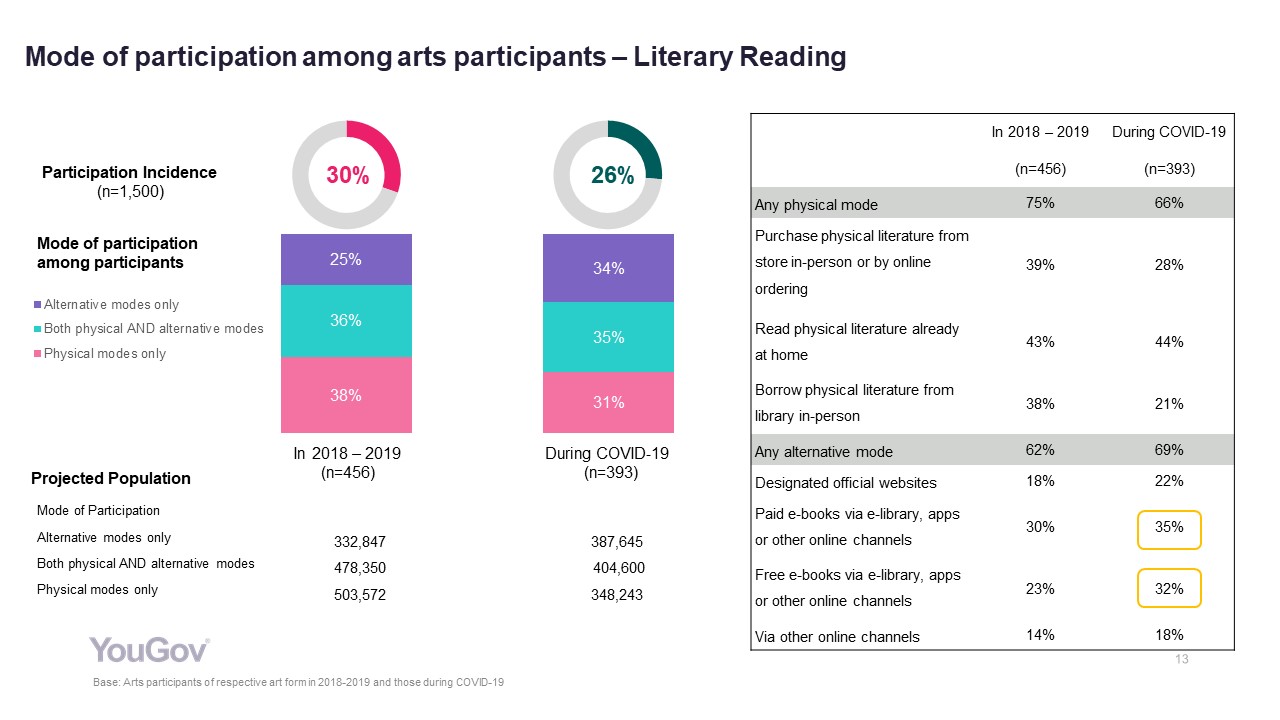 |
||
| 5.5 | Whether before or during COVID-19, there was over 40% of Retaining Participants who read both printed copies and e-books. On the other hand, nearly half of Young Participants read e-books only. (See the left of the chart below) | |
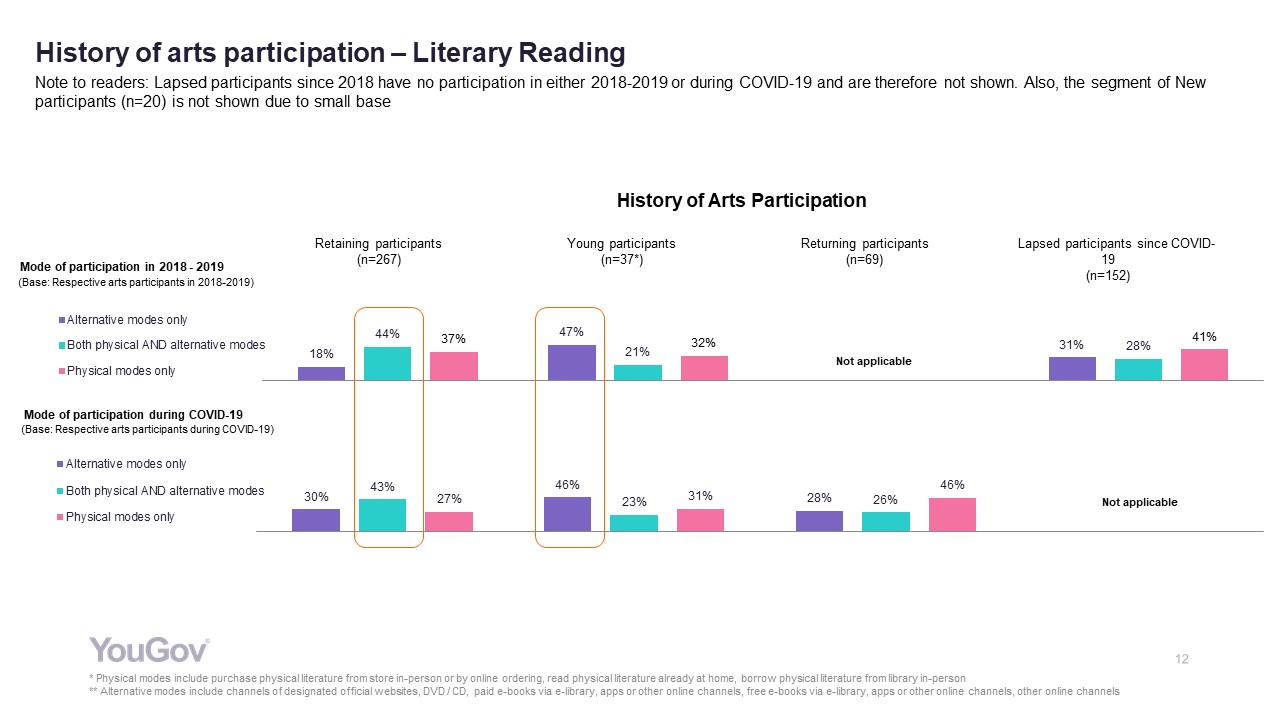 |
||
| 5.6 | Participants in Literary Reading were generally young (aged 16-34), and were skewed towards students and married persons having children under the age of 18. (See the chart below) | |
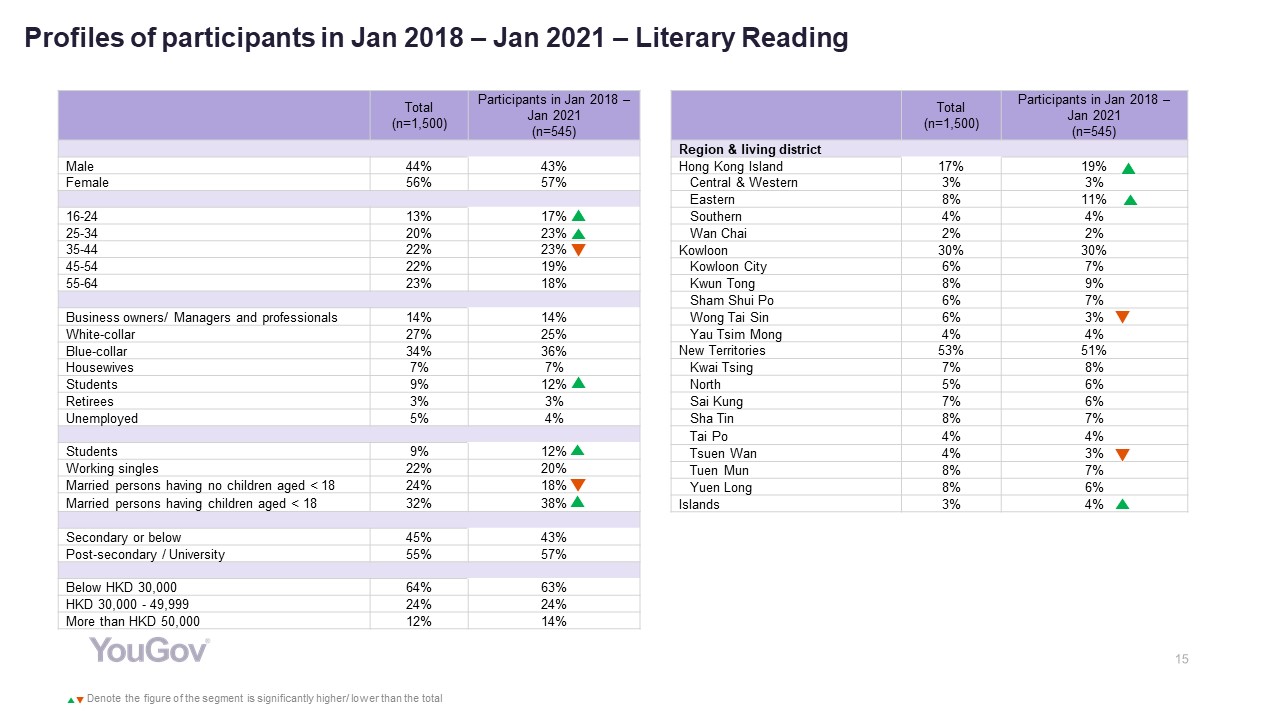 |
||
| Click here to download the full analysis on the Literary Arts section. | ||



